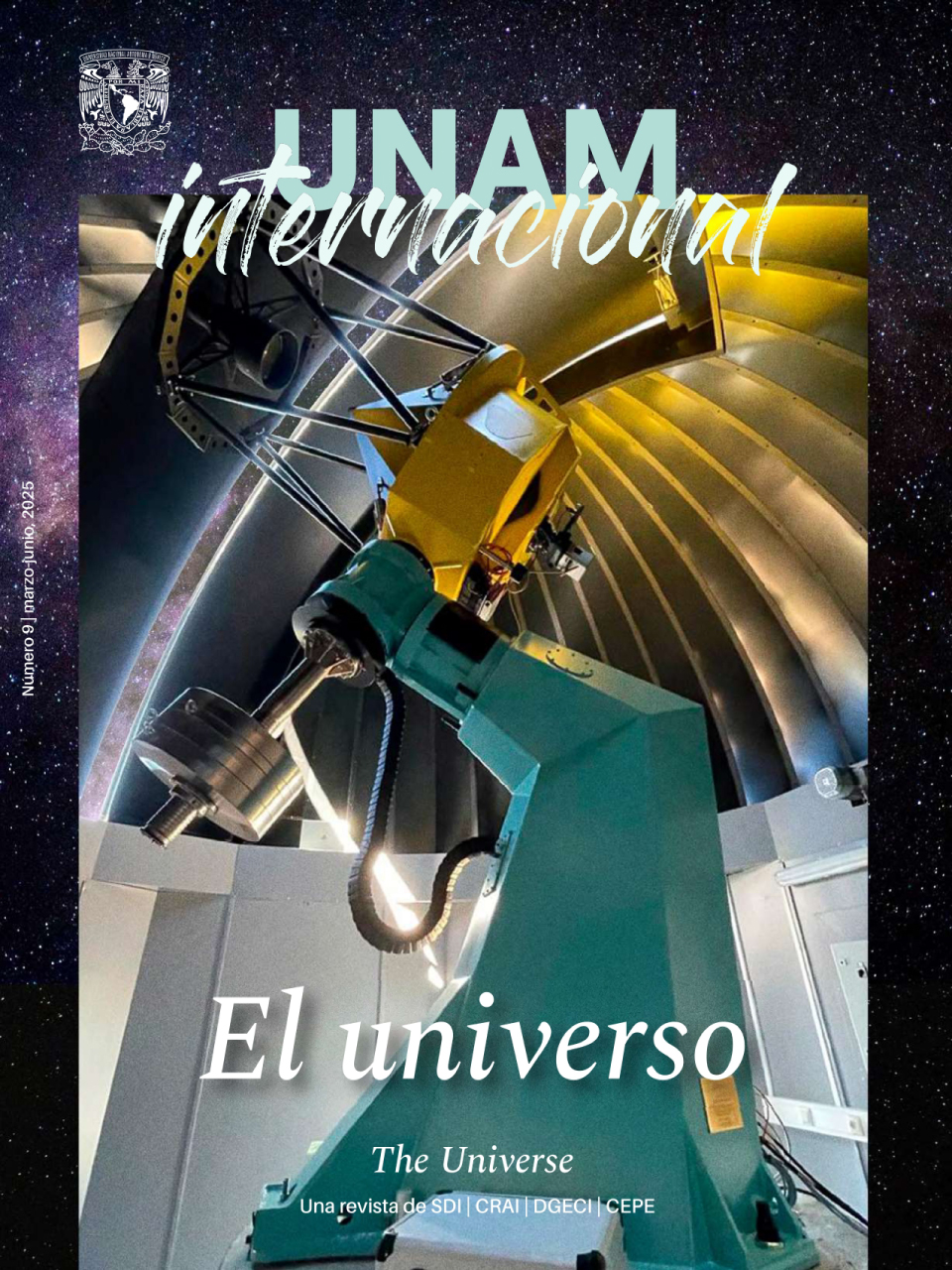31-03-2025
A Cosmic Cartographer. DESI Unveiling the Secrets of the Universe
THE ENIGMA OF DARK ENERGYSince the dawn of civilization, humanity has pondered the questions: Where do we come from? Where are we going? Modern cosmology seeks to answer these very questions—but from a scientific perspective. Today we know we live in an expanding Universe, and more astonishingly, in recent cosmic times, this expansion has accelerated.
Although we have a cosmological model that remarkably describes our observations, many fundamental questions remain open. For instance, we know the Universe’s expansion is accelerating because we observe it, but we do not yet understand what drives this phenomenon. To account for this, scientists introduced an enigmatic component into our model: dark energy. While its nature remains a mystery, we question whether it is constant or evolves over time.
To solve this puzzle, an international experimental effort has been launched, developing both ground-based and space-based instruments dedicated to its study. One of the cutting-edge projects leading this charge is the Dark Energy Spectroscopic Instrument (DESI), a frontier experiment designed to unravel the mystery of cosmic acceleration.
A TELESCOPE WITH A THOUSANDS EYES
DESI is an ambitious program dedicated to studying dark energy through a massive spectroscopic survey. Its goal is to collect 40 million spectra of quasars and galaxies across a redshift1 range of 0 to 4, constructing the largest map ever created of the Universe’s large-scale structure, and spanning billions of years of cosmic history. To achieve this unprecedented number of spectra, DESI has developed an innovative system of 5000 fully automatized robots.
A JOURNEY THROUGH TIME
In cosmology, looking far away means looking into the past. Since light travels at a finite speed, it takes time to cross great distances. As a result, the light reaching us from the most distant regions of the Universe is a relic from the past. To decipher cosmic enigmas, DESI studies the evolution of the Universe’s expansion by analyzing its large-scale structure at different epochs, capturing a series of snapshots that reveal its transformation over time.
A DISTINCTIVE IMPRINT
The Universe’s structure preserves a unique signature: the densest regions became frozen in time, forming spherical shells around overdense centers. Over time, galaxies formed in these higher-density zones, leaving a detectable imprint in their large-scale distribution.
This imprint originated in the early Universe due to a phenomenon known as baryon acoustic oscillations. During this period, the cosmos was a hot plasma where matter interacted constantly with radiation. The interplay between gravity (which tended to pull matter together), and radiation pressure (which resisted compression), generated spherical waves that propagated through this plasma, just as ripples form when a droplet falls onto the surface of water. As the Universe expanded, these oscillations became frozen, imprinting a characteristic pattern in the distribution of galaxies that we can still observe today. By measuring the apparent size of this standard rule, we can probe the Universe’s expansion history.
CHALLENGING EINSTEIN
But the Universe’s large-scale structure not only holds clues about its history—it also provides insight into the nature of gravity. By studying how cosmic structures form and evolve, we can test Einstein’s General Relativity, exploring whether this theory alone is valid at cosmic scales.
Regardless of the outcome, this research will mark a milestone in our understanding of the Universe. DESI will help answer fundamental questions: What drives cosmic acceleration? Is dark energy constant, or does it change over time? Is General Relativity valid on cosmological scales, or do we need a new theory of gravity?
The observation program began in 2020 and is expected to continue until 2026. Preliminary results from DESI’s first year of data suggest, for the first time, a preference for a dark energy that varies over time. If confirmed with future observations, this finding would mark a turning point in our understanding of cosmic acceleration. In the coming years, DESI will continue to send us clues from the farthest reaches of the cosmos. And so, the mystery remains, waiting to be unraveled.
A GLOBAL EFFORT TO UNDERSTAND OUR UNIVERSE
Cutting-edge observational cosmology requires not only advanced technology but also the collaboration and funding of experts worldwide. DESI is the result of an international effort that brings together approximately 1,000 scientists from 70 institutions across the globe.
Mexico contributes to this global effort through several institutions, including UNAM’s institutes of Physics, of Astronomy, and of Physical Sciences, National Politechnical Institute’s CINVESTAV, the University of Guanajuato, and the National Institute of Nuclear Research. Each member plays a crucial role in the success of the experiment, whether in design, construction, data analysis, funding, or administration—demonstrating that science advances through collective effort.
Mariana Vargas is an observacional cosmologist. She studied Phisics at UNAM, a master’s degree at Université de Paris - Sud and her PhD at Université Denis Diderot. At UNAM’s Institute of Phisics she researchs with projecys as DESI and SDSS, where she tests such a solid theory as Eintein’s General Relativity.
